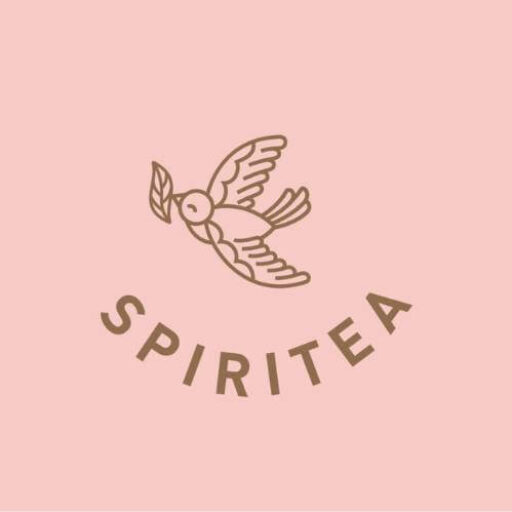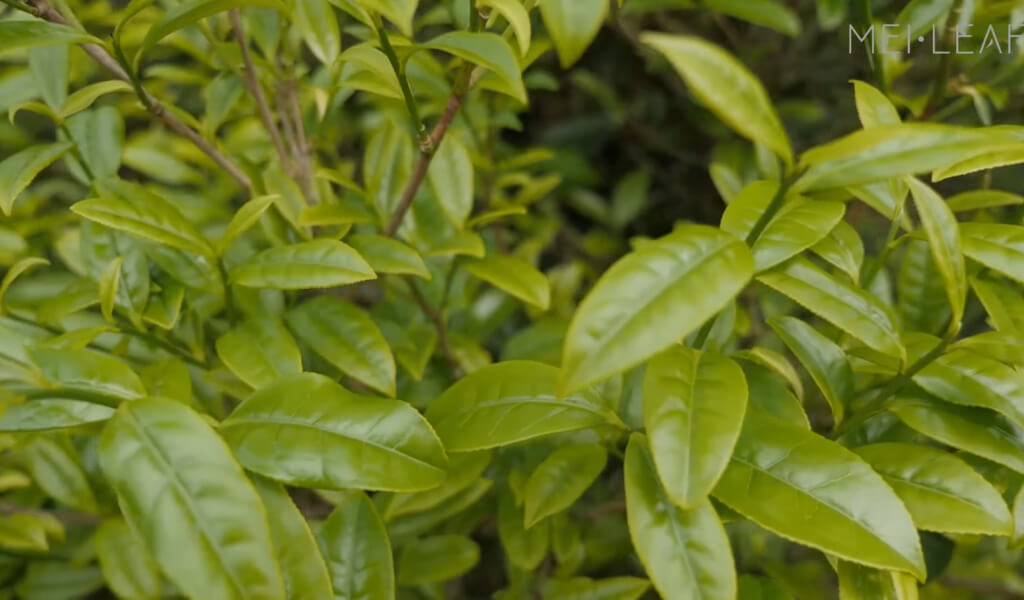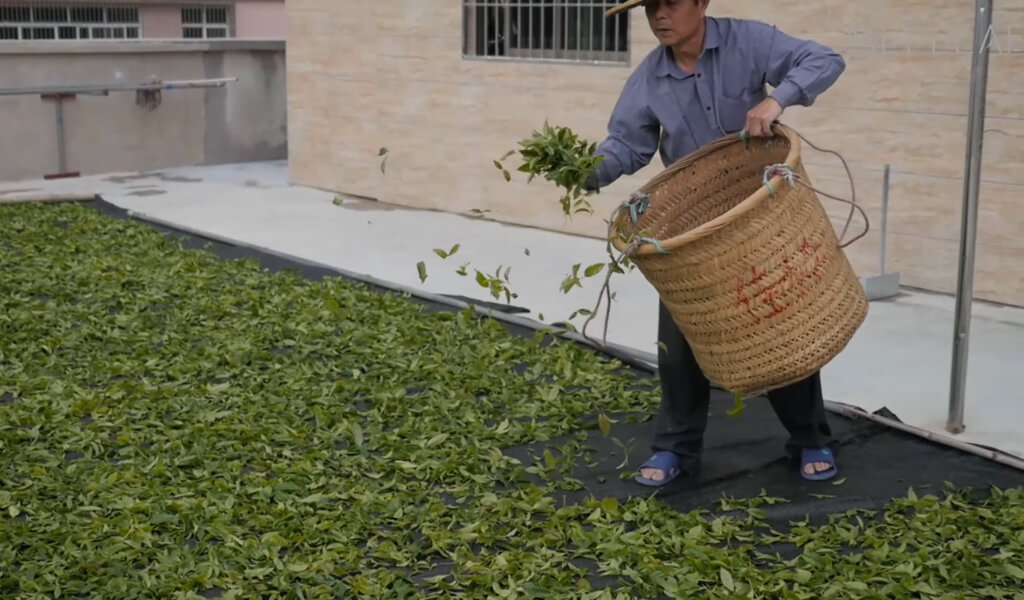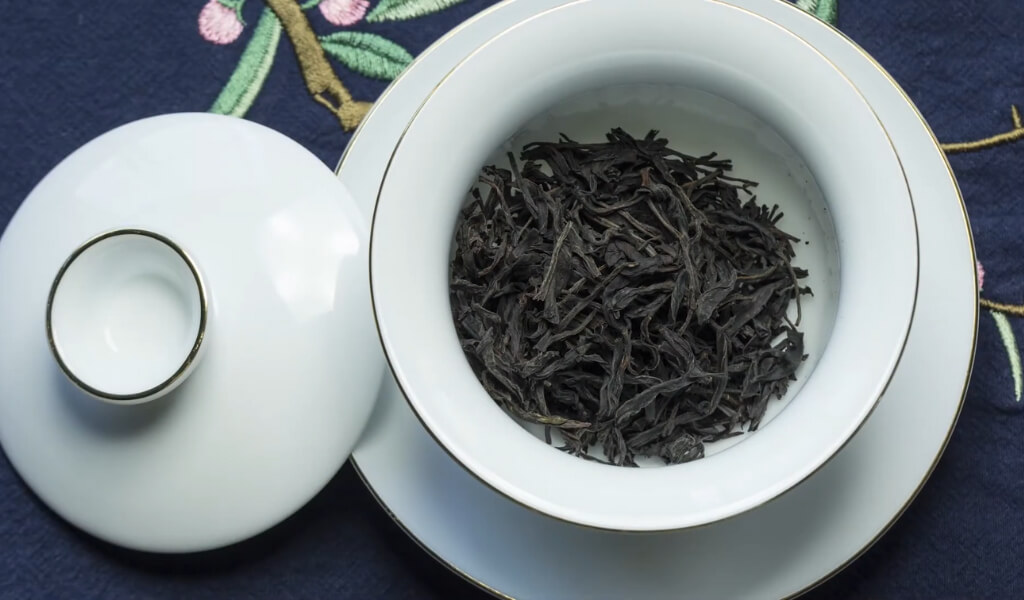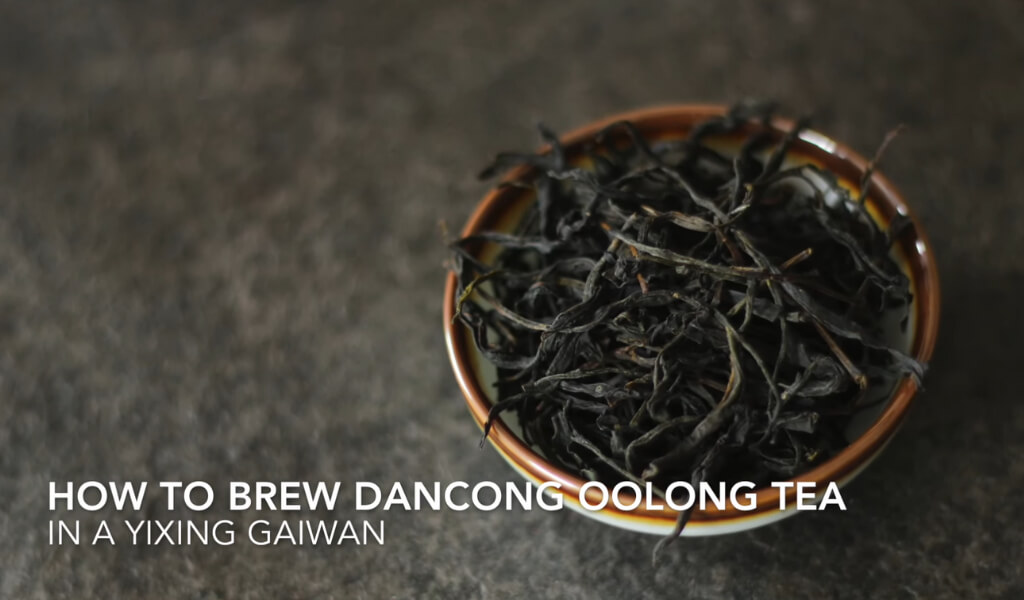As a long-time tea enthusiast, I’ve always found the world of Dancong Tea to be fascinating and full of rich flavors.
With a history steeped in the high mountains of southern China, each cup of Dancong tea brings a unique story and a delightful sensory experience.
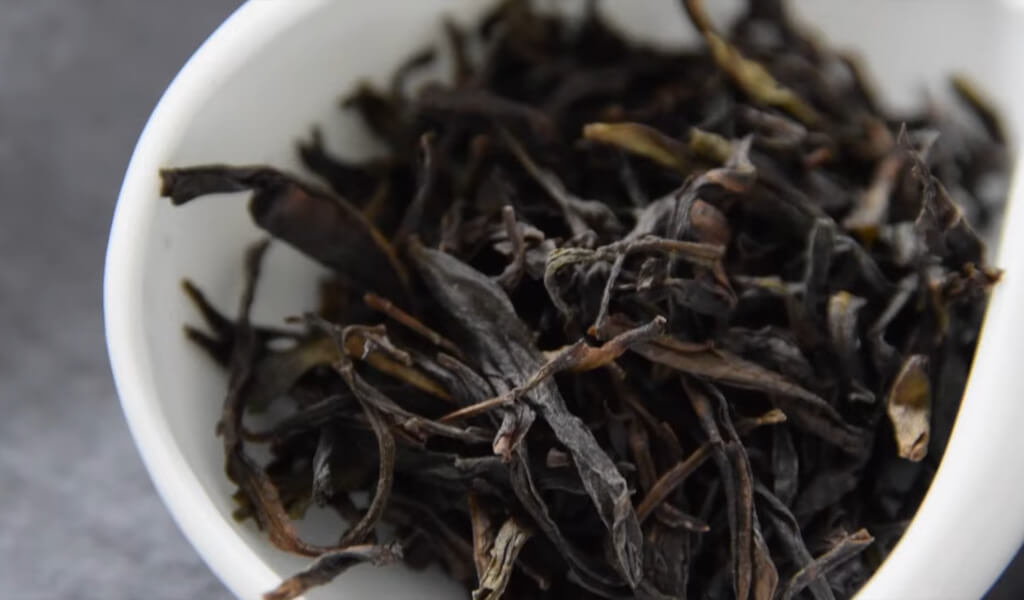
What is Dancong Tea?
Dancong Tea is not just any tea, but a specific type of Oolong tea renowned for its wide array of fragrant aromas and nuanced flavors. Dancong tea, originating from Phoenix Mountain in China’s Guangdong Province, mimics the flavors and scents of fruits and flowers, earning its name “single bush” or “single trunk.”
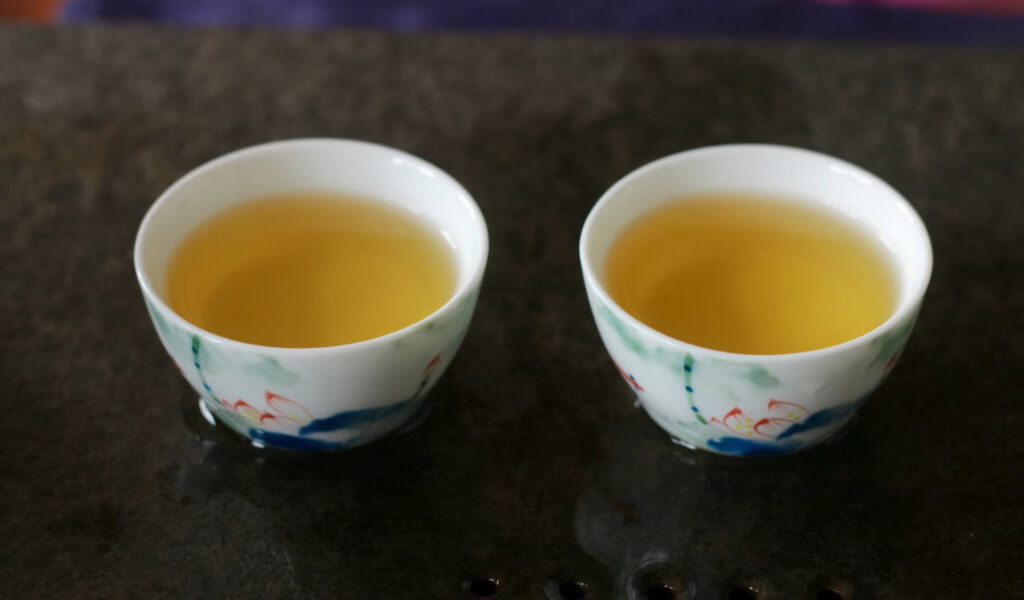
Dancong tea provides a unique experience with its diverse sub-varieties, each named after the specific fragrances they capture, such as ‘Mi Lan Xiang’ for honey orchid and ‘Ya Shi Xiang’ for duck excrement aroma.
To truly savor Dancong, it’s essential to grasp the essence of Oolong tea, the broader category it belongs to. Oolong tea, a traditional Chinese tea crafted through a distinct process involving sun-withering, oxidation, and meticulous curling, has its origins in China’s Fujian Province.
This process helps create a complex, layered tea that can be light and floral, dark and rich, or anywhere between, making it an incredibly versatile tea category. Known for its wide spectrum of flavours, potential health benefits, and deep-rooted history in Chinese tea culture, Oolong tea holds a special place in the world of tea.
And within this realm, Dancong, with its unique ability to mimic natural fragrances, stands out as a distinctive and sophisticated member. As we delve deeper into Dancong tea, you’ll see why this tea is such a treasure among tea connoisseurs worldwide.
Now that we know what Dancong tea is, let’s take a step back and explore its rich history.
Dan Cong Tea History
Delving into the intriguing history of Dancong tea takes us back to the time of the Southern Song Dynasty. According to the “Chaozhou Fuzhi” records, the birth of Fenghuang (Phoenix) tea, which we now know as Dancong tea, can be traced back to the reign of the Song Emperor in 1278. While fleeing to the south, the emperor passed through Fenghuang Mountain, where he tasted the local fresh tea leaves. This tea, which provided a soothing relief to his thirst, made such an impression on him that he named it “Song Tea” in honour of his dynasty.
Fast forward to the Jiajing period of the Ming Dynasty, around 1547, “Chaozhou Fu Zhi” makes the earliest mention of tea production requiring tribute. This suggests that Chaozhou tea, the predecessor of Dancong, had earned the prestige of being a court tribute over 400 years ago. But it’s worth noting that the tea would have been green tea during this period.
As we progress in history, Guo Zizhang’s “Chaozhong Miscellaneous Notes” from 1582 record the advent of “yellow tea”. Fast forward again to 1943, the “Guangdong Tongzhi Draft” describes the method of yellow tea production – frying the tea after “making green”. This signifies the beginning of the production process we now associate with oolong tea.
From this, we can infer that the birth of oolong tea, the delightful category Dancong tea falls under, happened between the late Ming and early Qing dynasties. This historical journey of tea transformation truly adds to the mystique and allure of Dancong tea.
Read More:
- What is Tie Guan Yin Tea? Types, Benefits And Side Effects
- What To Know About Shui Xian Tea: Ultimate Guide For Newbies
- History of Alishan Oolong Tea
- What is Da Hong Pao Tea? Ultimate Instruction For Newbies
Understanding its history, we can truly appreciate what makes Dancong tea stand out in oolong teas.
What makes Dancong Oolong so special?
In the vast realm of oolong tea, four main types rule the roost – the aromatic Tie Guanyin from southern Fujian province; the robust Wuyi rock oolongs from northern Fujian; the diverse array of Taiwanese oolongs; and last but not least, our beloved Dancong hailing from Guangdong province.
You might ask, “What sets Dancong apart from its oolong cousins?” And I would say, “Ah, it’s the exceptional variety of aromas!” Indeed, what makes Dancong truly special is its abundance of aroma sub-varieties. Believe it or not, there are at least 10 distinct aroma sub-varieties within Dancong tea, each boasting its unique taste and flavour profile.
These delightful sub-varieties broadly fall into one of three main categories – the enticing fruity, the delicate floral, and the earthy herbal aromas. I’ve tried and can recommend the Honey Orchid, Gardenia (or Dawuye), and Almond Fragrance sub-varieties. However, the journey doesn’t end there! Other tantalising sub-varieties like Ginger Flower, Iris Flower, Jasmine, and many more await your discovery. The world of Dancong is as vast and varied as fragrant and flavorful.
Beyond its distinct aroma and flavor, let’s explore how Dancong tea can contribute to your health and wellness.
Dancong tea benefits for health and wllness
In addition to the rich flavours and aromas that make Dancong tea a treat for the senses, numerous health benefits are associated with it, making it a treat for the body.
Rich in antioxidants known as polyphenols, which help fight free radicals, Dancong tea is considered to have potential health benefits. Drinking Dancong tea may aid digestion, enhance metabolism, and even provide a sense of relaxation and mental clarity.
It’s no wonder that in traditional Chinese medicine, define oolong teas like Dancong have been used to promote wellness and longevity for centuries. However, it’s important to note that while the potential health benefits of tea are promising, they can vary from person to person and should not replace any prescribed treatments or medications.
What are the Dancong Tea Side Effects?
While Dancong tea offers a range of benefits and a fascinating aroma-taste profile, it’s crucial to acknowledge that, like most teas, it may also come with potential side effects. Primarily, these side effects are tied to its caffeine content.
Even though the caffeine level in Dancong tea is generally less than in coffee or black tea, it can still lead to restlessness, insomnia, or an upset stomach for some, particularly if consumed in excess.
Pregnant and nursing women and individuals with specific medical conditions such as heart issues or stomach ulcers might need to limit their caffeinated beverages, including Dancong tea. It’s always best to consult a healthcare provider if you have concerns about the caffeine content and how it might affect you.
How much is Dancong tea caffeine?
On average, a cup of Dancong tea contains approximately 30-50 mg of caffeine, making it a milder alternative to coffee or black tea for those who are cautious about caffeine intake. This caffeine content is found in Dancong as it belongs to the oolong tea family. The exact amount, however, can vary based on factors like the specific variety of Dancong, how long it’s brewed, and the tea leaf’s age.
This makes Dancong a great choice for a gentler caffeine kick and a pleasing addition to your breakfast or afternoon snack, offering a balanced energy boost. As always, remember that moderation is key to enjoying your Dancong tea.
How to make Dancong Tea at Home
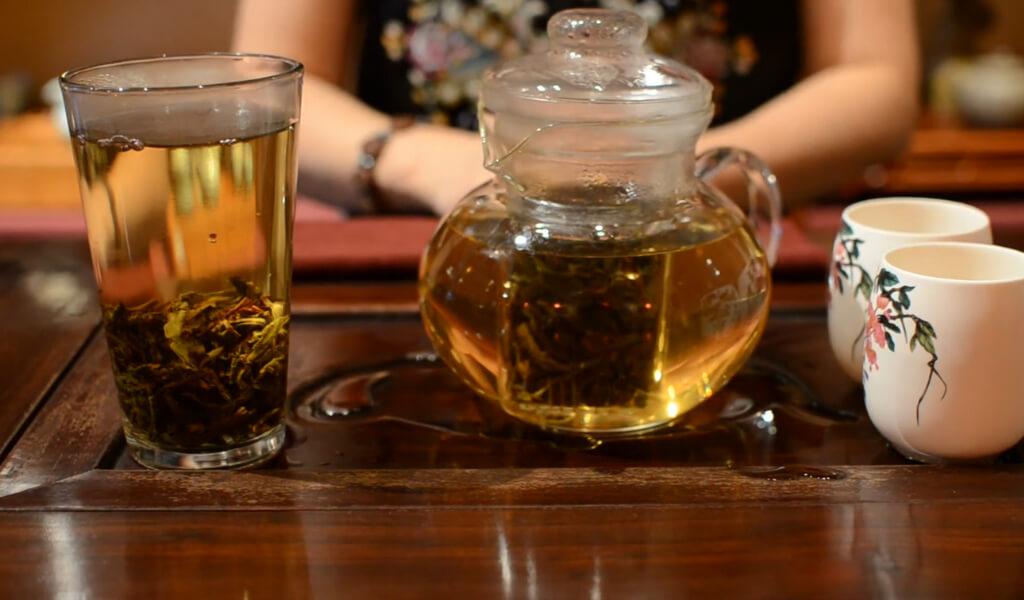
The art of brewing Dancong tea is a delightful journey in itself, and just yesterday, I embarked on this journey again, right at home. Here’s what I did:
Ingredients and Tools:
- 5 grams of high-quality Dancong tea leaves
- One traditional gaiwan or a small teapot
- Boiling water at around 90-95 degrees Celsius
- A tea strainer (optional)
Step-by-step Instructions:
- I started by preheating my gaiwan with boiling water, which allowed me to appreciate the tea leaves empty aroma.
- I quickly discarded the water, added the tea leaves to the gaiwan, and gently shook it to release the aroma.
- I poured the hot water into the gaiwan, ensuring all the leaves were soaked, and let it steep for about 30 seconds.
- I poured the tea into a pitcher through a strainer, draining all the liquid from the gaiwan. This is important to halt the brewing process and keep the flavours consistent.
- The golden brew was ready to be savored!
After you’ve brewed the perfect cup, it’s time to immerse yourself in the enchanting flavours and aromas of Dancong tea.
Dancong Oolong Detailed Flavor Profile
The Dancong tea showcased a complex character – a harmonious blend of floral, fruity, and a hint of herbal notes, living up to its reputation. What truly captivated me was the ‘yun’ or aftertaste. The lingering sweetness and aroma permeated my senses long after the tea was gone.
Each steep revealed fresh flavors and scents, showcasing the excellence of Dancong tea. By the third infusion, it fully unveiled its rich character, creating a transcendent experience encapsulating its history, culture, and unique aroma.
Indeed, brewing and savouring Dancong tea is an immersive experience, a ritual that invites you to pause and appreciate the finer things in life. And the beauty of it? With each new batch of leaves, you embark on this journey anew, discovering new depths, flavors, and aromas. What a delight!
Where can you find this exquisite tea to start your brewing journey?
Quality Dancong Tea Where to buy
Both online and local tea shops have their advantages. Online shops usually offer a wider variety, detailed product descriptions, customer reviews, and the convenience of home delivery. Some notable online vendors include Seven Cups, Yunnan Sourcing, and Tea Drunk.
Local tea shops, on the other hand, provide a more hands-on experience. You get the chance to smell the tea and taste it before buying. In the USA, several tea shops known for their quality teas include The Cultured Cup in Dallas, Texas; Red Blossom Tea Company in San Francisco, California; and Floating Leaves Tea in Seattle, Washington.
Remember, the key to buying good Dancong tea is to find a reputable vendor who sources directly from tea farmers in the Phoenix Mountain area. Happy tea hunting!
Conclusion: The Unique Allure of Dancong Tea
In my exploration of tea, Dancong tea stands out as truly enchanting. Its deep history, distinct aromas, and health benefits elevate it beyond a simple beverage. It’s an immersive experience, a historical and natural dialogue, and a voyage of revelation. Each brew tells a tale; every sip unveils intricate flavors and scents.
Whether you’re a seasoned tea connoisseur or a curious novice, I wholeheartedly invite you to experience the fascinating world of Dancong tea. Here’s to many delightful steepings and the shared joy of tea!
See more articles here.
FAQs
What is the best Dancong tea?
The “best” Dancong tea largely depends on personal preference, as the charm of Dancong lies in its diverse aroma sub-varieties, each offering unique flavors. However, the Honey Orchid (Mi Lan Xiang) variety is often highly recommended for its enticing floral and fruity aroma.
What temperature should Dancong tea be?
Brewing Dancong tea at the correct temperature is essential for unlocking its unique aroma and flavor. Ideally, the water temperature should be around 195-205°F (90-96°C). A lower temperature might not fully express the complex flavours, while too high a temperature might result in bitterness.
What is Dan Cong oolong in Chinese?
Dan Cong oolong in Chinese is written as “单枞乌龙”. “Dan Cong” (单枞) translates to “single bush” or “single trunk”, referring to the tea’s tradition of being made from single, individual tea trees rather than blended from leaves of various trees.
How long should Dancong tea be steeped?
The ideal steeping time for Dancong tea usually lasts 1 to 2 minutes for the initial infusion. However, this can vary based on personal preference and the specific aroma type of your Dancong. Subsequent infusions can be longer, adding 30 seconds to each following steep.
I’m Shanna, creator of Spiritea Drinks. I’m all about teaching people to grow their own food, tea, cook what they harvest, and eat with the seasons.
